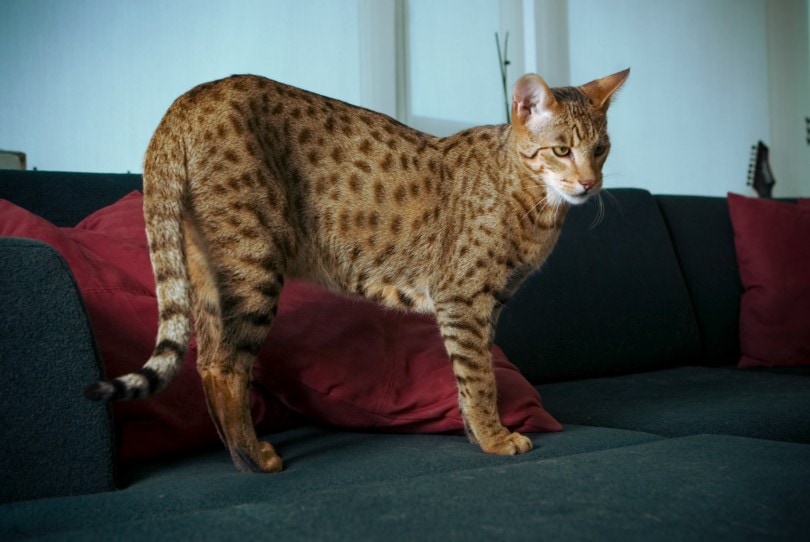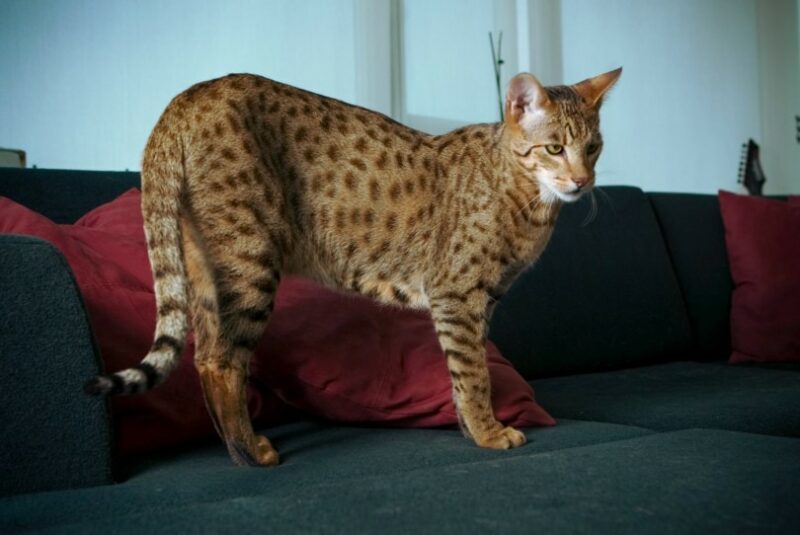Click to Skip Ahead
The Ashera cat may have caught your eye due to their striking resemblance to the wild felines that roam the scorching savannahs of Africa. After all, this exotic breed is claimed to be a hybrid of a domestic cat, an African Serval (Leptailurus serval), and an Asian Leopard cat (Prionailurus bengalensis)! With such an outstanding lineage, it’s no wonder that this big kitty is often touted as one of the rarest and most expensive cats in the world.
If you were lucky enough to find one, you would have to shell out a whopping $125,000 and maybe even more. That hefty price tag doesn’t even include everything that you’ll need to buy to meet their royal needs!
But before we dive into the budget that you would need to acquire and care for an Ashera, we must warn you that there is a great deal of controversy and skepticism surrounding this breed’s origins.
The Ashera Cat’s Background
In 2006, a biotechnology company called Allerca Lifestyle Pets, owned by Simon Brodie, announced that it had developed a new breed of cat, one resulting from the crossing of a Serval, an Asian Leopard cat, and a domestic cat. These hybrids were apparently hypoallergenic and extremely rare, factors that helped inflate their price.
However, the authenticity and origins of the Ashera cat have constantly been questioned, primarily because Lifestyle Pets (which closed in 2015) never disclosed its breeding records. These cats are not recognized by any official feline association, meaning there are no breed standards or registries to verify the authenticity of kittens sold by so-called Ashera breeders.
Since these big cats were primarily available through Lifestyle Pets, it is difficult to provide an accurate and up-to-date price range for Ashera cats in today’s market. That said, since they are likely closely related to Savannah cats—if not the same exact breed—they share roughly the same costs when it comes to their initial setup, supplies, and general care.
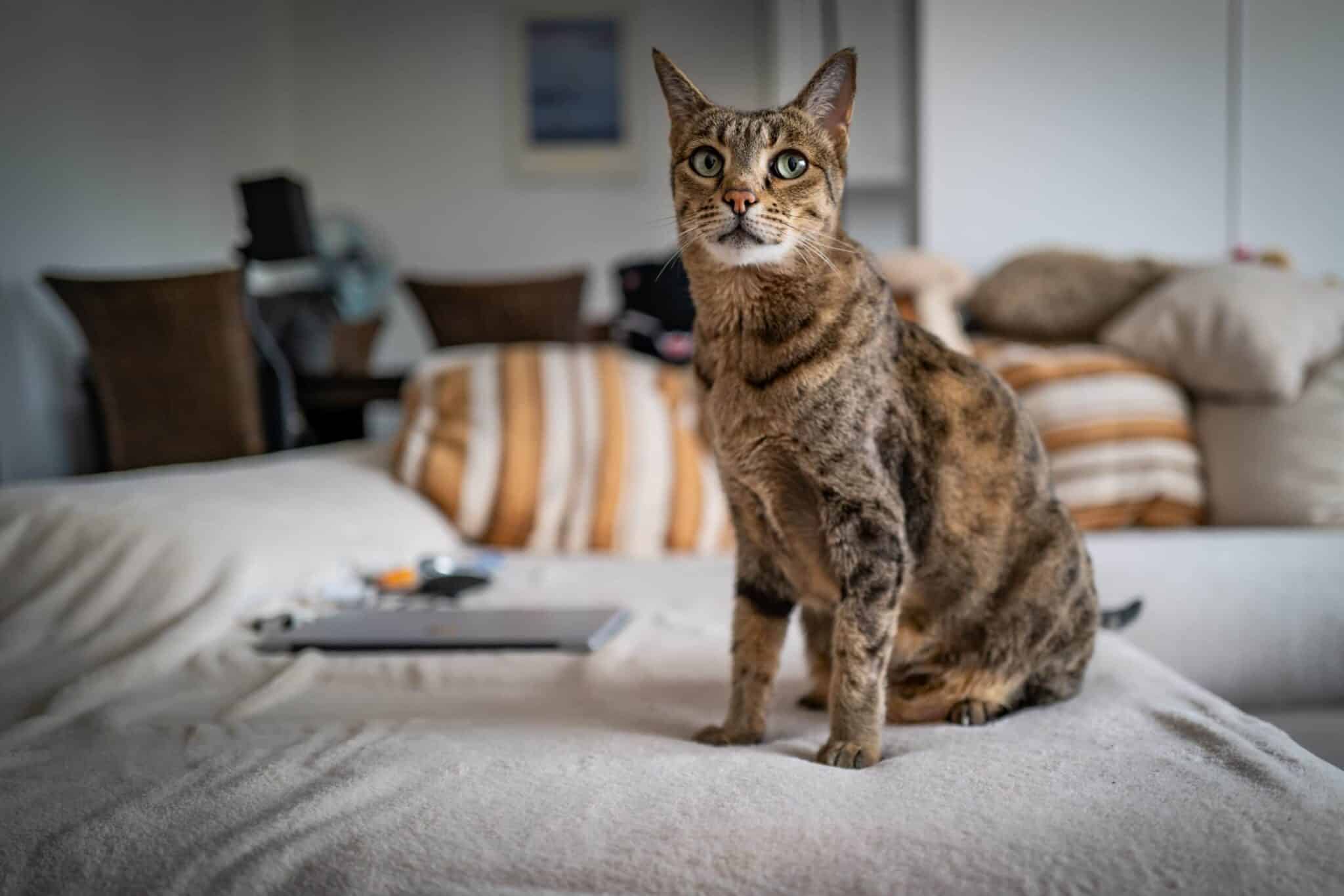
Bringing Home a New Ashera Cat: One-Time Costs
Aside from the controversy surrounding the authenticity of Ashera cats and their exorbitant cost, you should expect to shell out a hefty sum for initial setup and supplies. Other one-time expenses include everything that a cat owner needs to have in place before the new kitten comes into the home. Also, an Ashera’s first visit to the vet can be much higher than for other breeds due to their large size and exotic status.
Free
The only way to get one of these exotic cats for free is if someone gives you theirs because they can’t take care of them anymore. But if they paid that huge amount of money to acquire one, they’re unlikely to let them go for free.
Adoption
- $150–$500
Finding an Ashera cat to adopt at your local animal shelter is highly unlikely. That said, you may be able to find a Savannah cat in a legitimate Savannah rescue. But don’t hold out too much hope because these shelters are always flooded with offers for any available cats.
Breeder
- $75,000–$125,000+
Thousands of dollars is what you should expect to pay for an Ashera kitten, provided that you manage to find a good breeder. Always thoroughly research any breeder that you might find, and ask to see the pedigree of the parents to make sure they’re not selling you a Savannah kitten—or any other exotic cat hybrid that looks like a tiny leopard—just for a much higher price tag.
Initial Setup and Supplies
- $800–$1,150
When buying an exotic hybrid cat, certain things like microchipping may be included in the initial price. You’ll still need to purchase additional supplies, though, and cover a few important medical expenses (like vaccinations) before bringing home your kitten. These costs can quickly add up and lead to a bill that starts at around $800.
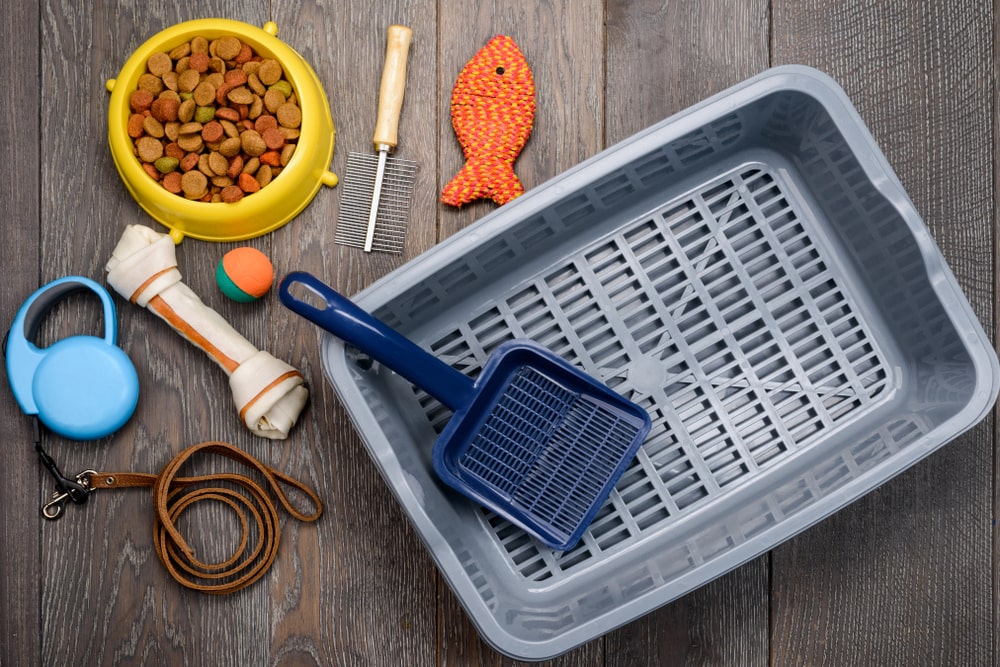
List of Ashera Cat Care Supplies and Costs
| ID Tag and Collar | $15–$20 |
| Spay/Neuter | $200 |
| X-ray Cost | $100–$150 |
| Ultrasound Cost | $250–$500 |
| Microchip | $45–$55 |
| Bed | $30–$50 |
| Nail Clipper | $10 |
| Brush | $10–$15 |
| Harness | $15–$25 |
| Litter Box | $25 |
| Litter Scoop | $10 |
| Toys | $30 |
| Carrier | $40 |
| Food and Water Bowls | $10 |
How Much Does an Ashera Cat Cost Per Month?
- $165–$420 per month
The monthly expenses for an Ashera can be higher if your cat develops a medical condition, which will increase vet bills. They will also vary depending on how much you pay for pet insurance, food, litter, subscription boxes, etc.
Health Care
- $100–$315 per month
Keeping an exotic cat breed entails higher healthcare costs compared to the average domestic cat breed. One of the main reasons is the need for a large food budget due to the size of these cats, but the pet insurance plan that you choose will also have a significant impact on your monthly expenses.
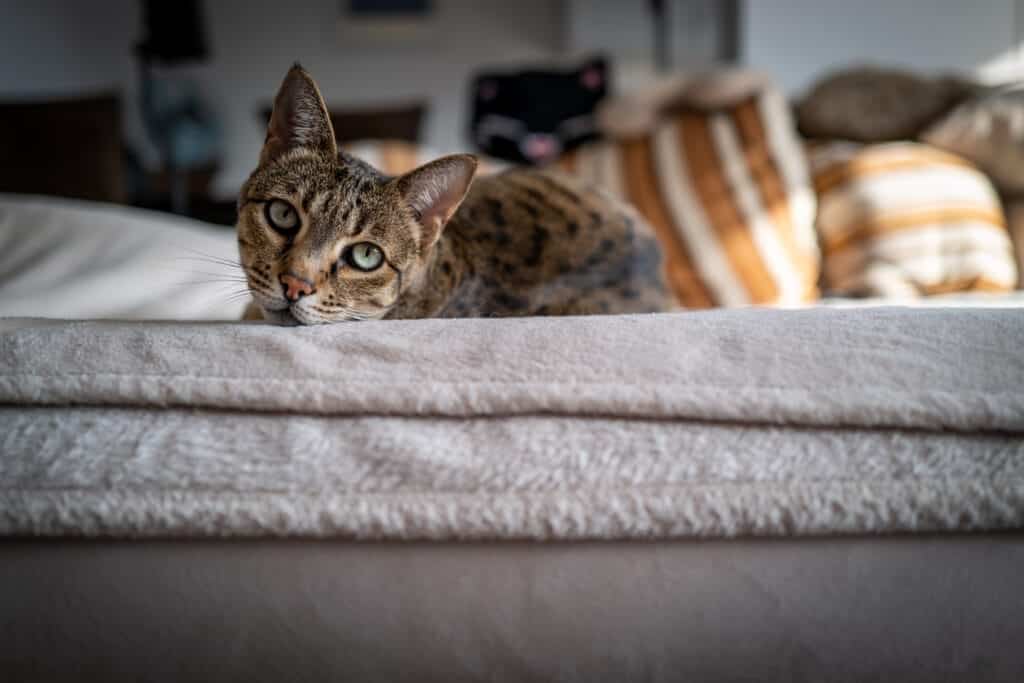
Food
- $30–$45 per month
For large and exotic cat breeds with high activity levels, it is recommended to provide them with high-protein cat food. Make sure to follow the feeding instructions according to your cat’s weight, and consult with your vet if you have any questions or concerns.
Grooming
- $0–$30 per month
Maintaining your Ashera cat’s coat won’t take up too much of your money. A good brushing session about once a week should be enough. As for their nails, it’s recommended to trim them every 2 weeks. If you prefer, you can have a professional pet groomer handle it, which may cost between $15 and $30, depending on your location and the groomer’s rates.
Medications and Vet Visits
- $50–$100+ per month
A routine examination at the veterinarian can cost you between $50 and $250, depending on the treatment and care required. However, since the Ashera is a large hybrid cat, you may need to visit an exotic vet.
Pet Insurance
- $20–$140 per month
Pet insurance for an exotic breed is often more expensive than a plan for an average domestic cat. Here’s a sample plan* from Embrace Pet Insurance:
Ashera, Bengal, or Savannah, 1-Year-old Female
- Highest price with unlimited annual reimbursement limit, $100 annual deductible, and 90% coverage: $133.16
- Lowest price with a $5,000 annual reimbursement limit, $1,000 annual deductible, and 70% coverage: $22.14
Domestic Longhair, 1-Year-old Female
- Highest price with unlimited annual reimbursement limit, $100 annual deductible, and 90% coverage: $82.44
- Lowest price with a $5,000 annual reimbursement limit, $1,000 annual deductible, and 70% coverage: $13.71
*Based on a quote of someone living in New York

Environment Maintenance
- $45–$65 per month
When it comes to environmental maintenance, the biggest monthly expense will undoubtedly be litter. Consider investing in good-quality, dust-free, clumping litter.
| Litter | $20–$40/month |
| Deodorizing spray or granules | $10/month |
| Litter mat (optional) | $15/month |
Entertainment
- $20–$40 per month
Consider getting toys that your energetic cat can play with independently, such as mice, balls, and feather wands. You might also want to subscribe to a cat toy box service that delivers new and exciting toys to your doorstep every month. Prices for these boxes typically range from $20 to $40 per month.
Total Monthly Cost of Owning an Ashera Cat
- $165–$420 per month
If you’re thinking of getting an Ashera cat, be prepared to spend anywhere from $165 to $420 every month, on top of the initial adoption costs. Due to the ridiculously high purchase price, it’s not possible to get an exotic cat breed if you’re on a tight budget.
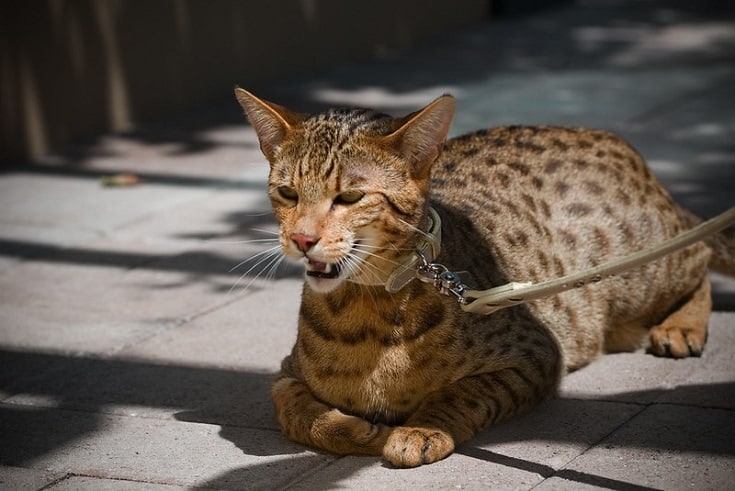
Additional Costs to Factor In
It is advisable to set aside extra funds for unforeseen expenses. For example, you may need to hire a pet sitter if you are going on vacation. Also, given the large size and exotic nature of these cats, they may cause more damage to your furniture than the typical house cat!
Therefore, you should think about putting extra money in your piggy bank in case of damage to your home.
Conclusion
The desire for rare and extravagant pets, coupled with the breed’s scarcity, has resulted in a lucrative market where some people are willing to pay gigantic sums to acquire an Ashera, even though their origins are questionable.
On top of that initial cost, you should expect to pay up to $420 in monthly expenses, though that could drop by several hundred dollars if you opt for more economical pet insurance. Nonetheless, this is still a huge amount of money. If you’re lucky enough to have such a large budget to spend for your pet, you might want to consider buying a Savannah cat instead, a real and authentic breed recognized by most cat associations, including the International Cat Association.
Featured Image Credit: AussieGold, Flickr

